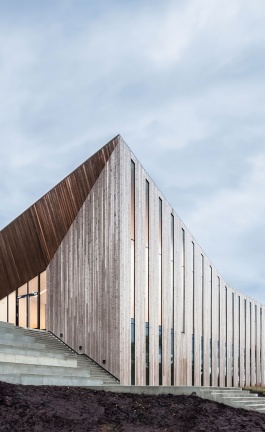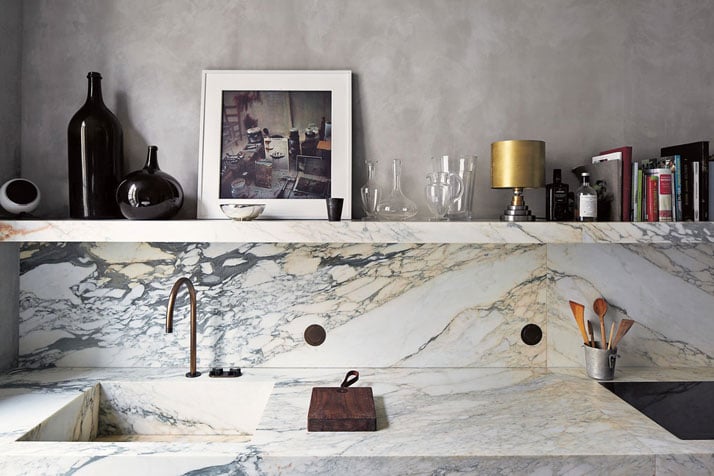
The kitchen in the Paris apartment of Joseph Dirand. Photo © Simon Watson, The New York Times.
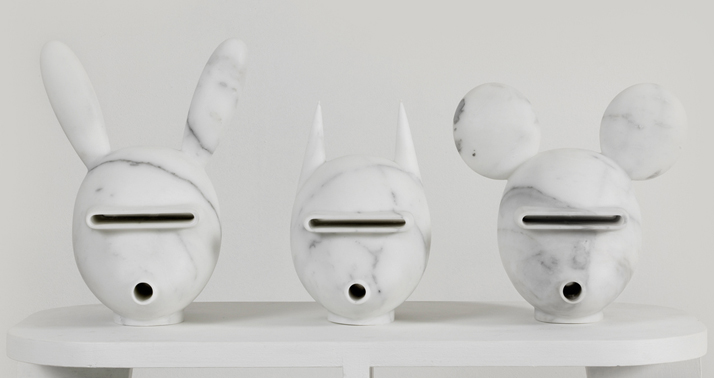
FC-SOFIA by Robot city.
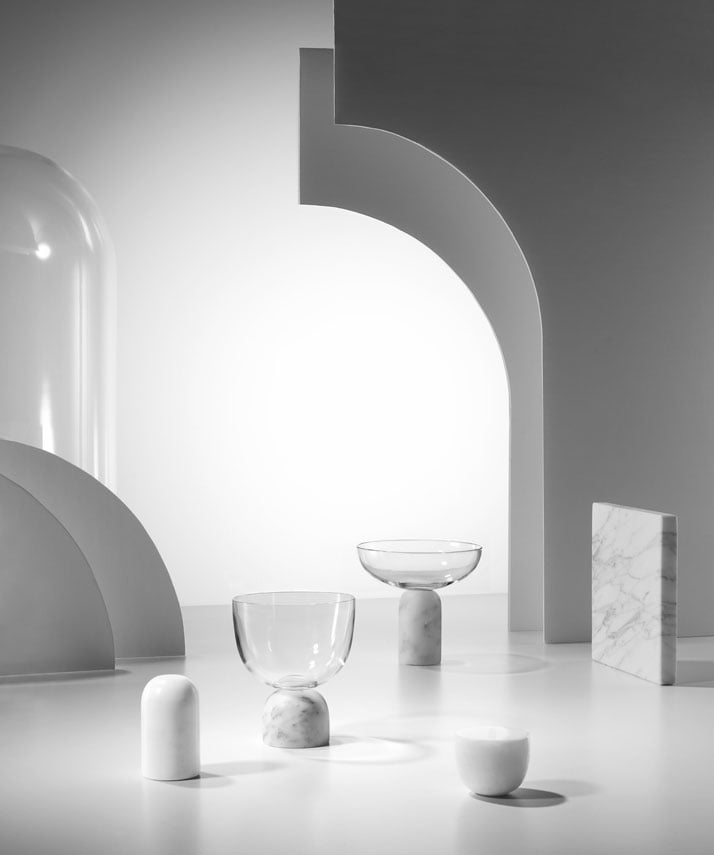
On The Rock glassware by Lee Broom.
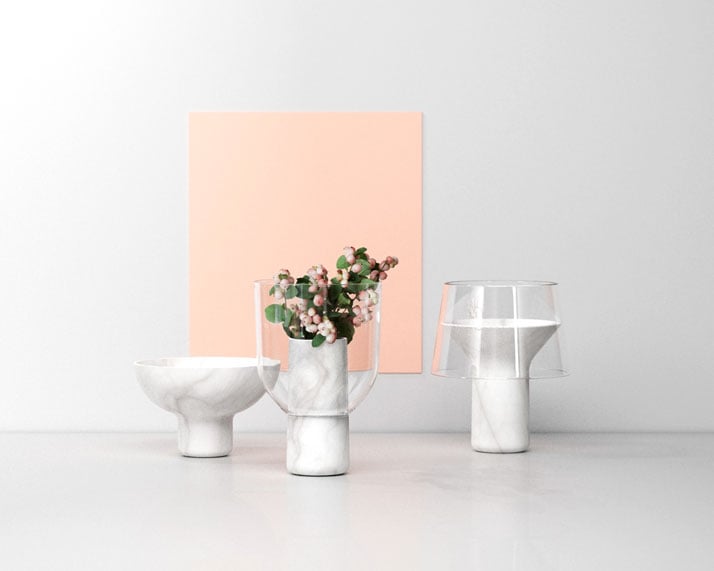
Abito vases by Sandro Lopez.
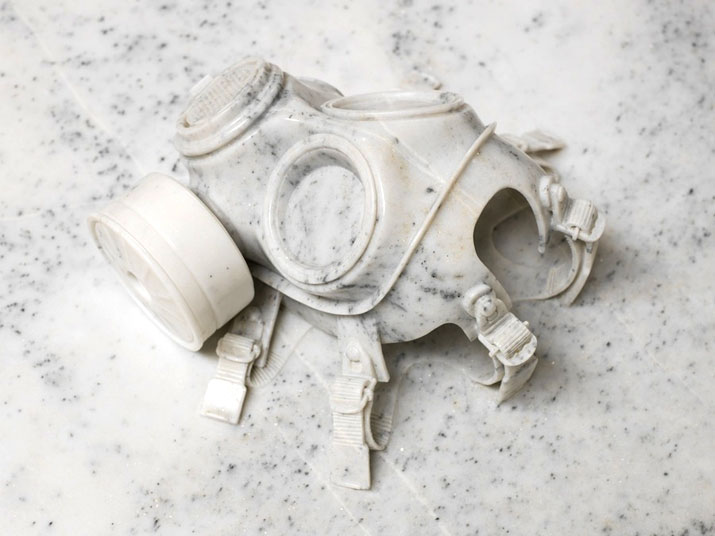
Ai Weiwei, Mask, 2013, marble, courtesy the artist and Lisson Gallery.
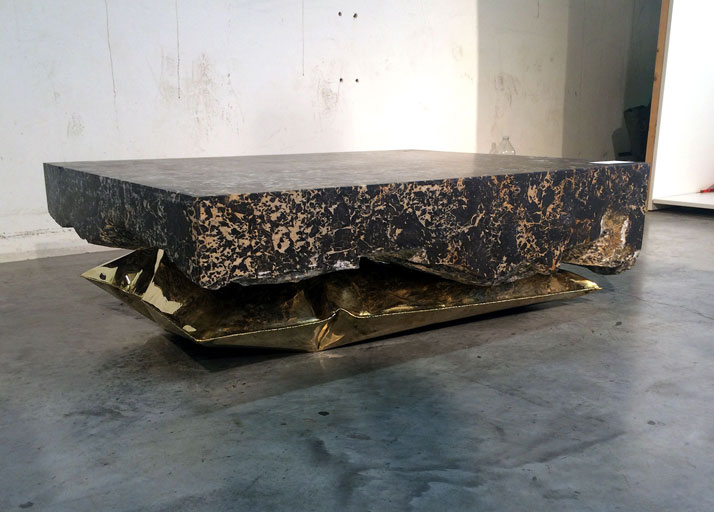
'In Hale' tabel by Ben Storms.
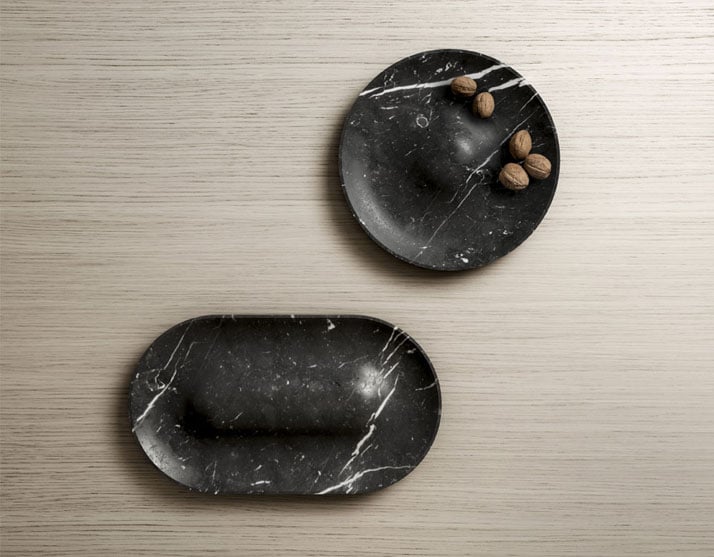
Marble 'Domo' Trays by Jean Louis Iratzoki & Sylvain Willenz for Retegui.
The mining, processing and use of natural stone, particularly marble, is a mammoth modern day industrial enterprise. The demand for marble and its different forms is exemplified by the number of dedicated trade shows worldwide: EXPOSTONE Moscow, the UK Natural Stone Show, Carrara Marmotec, Qatar Stone Tech, Xiamen Stone Fair, Brazil Vitória Stone Fair and India Stona are just a number of examples.
Invoking notions of high-end living and affluence, marble speaks to refined taste and discernment. Yet it would appear that in recent times marble has worked diligently to alter its affiliation with ideas of ostentation and excess, instead gaining favour with a cohort of contemporary designers and design-conscious consumers. As a material, marble is tactile and strong, imbued with both emotion and cultural relevance. It has a valuable and versatile quality, finding application in luxury interiors and modern settings, in combination with natural materials such as copper, leather and wood, and in faux decoration and ornamentation.
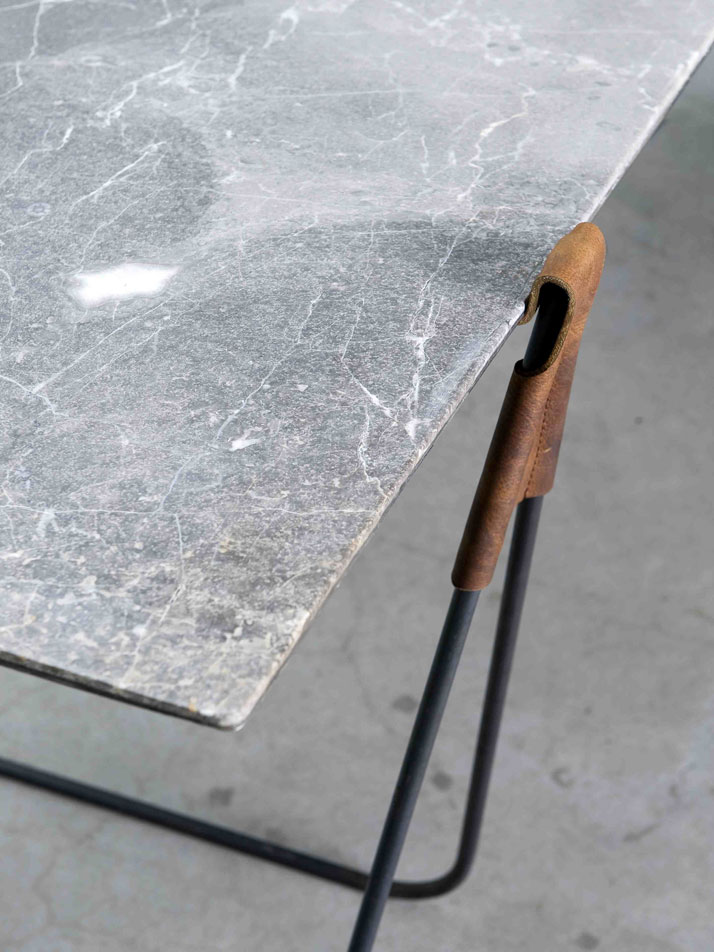
'In Vain' tabel by Ben Storms.
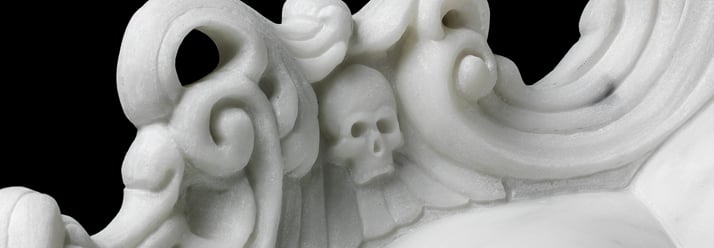
'In Vain' tabel by Ben Storms.
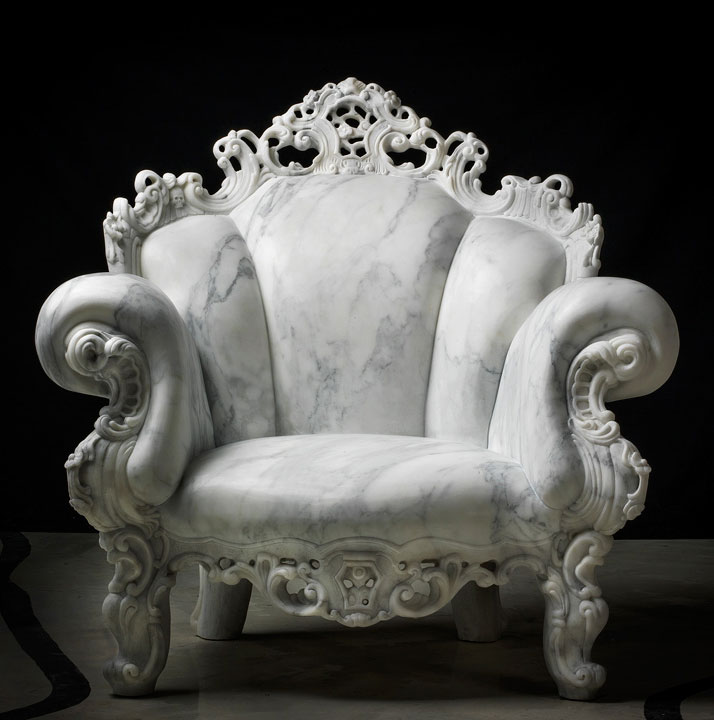
Proust Chair by Alessandro Mendini for Robot City.
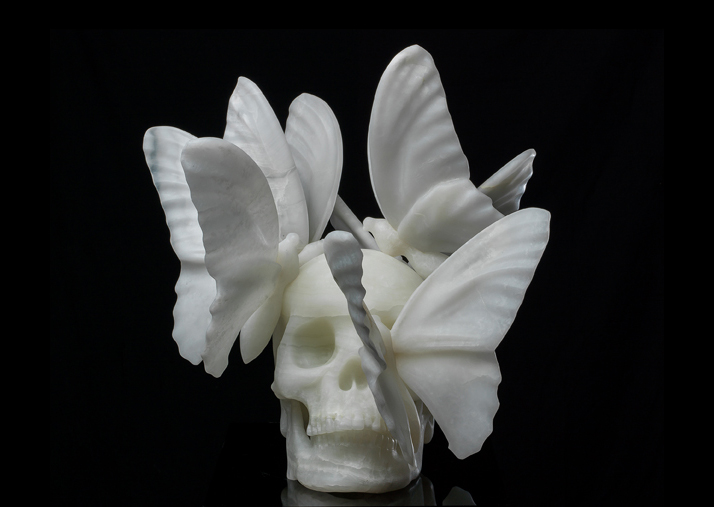
Philippe Pasqua for Robot City.
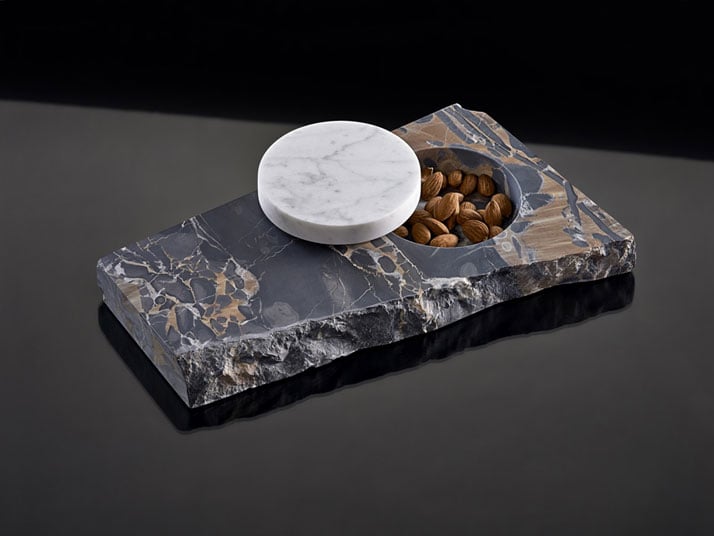
Fragment series by Rachel Griffin / Earnest Studio.
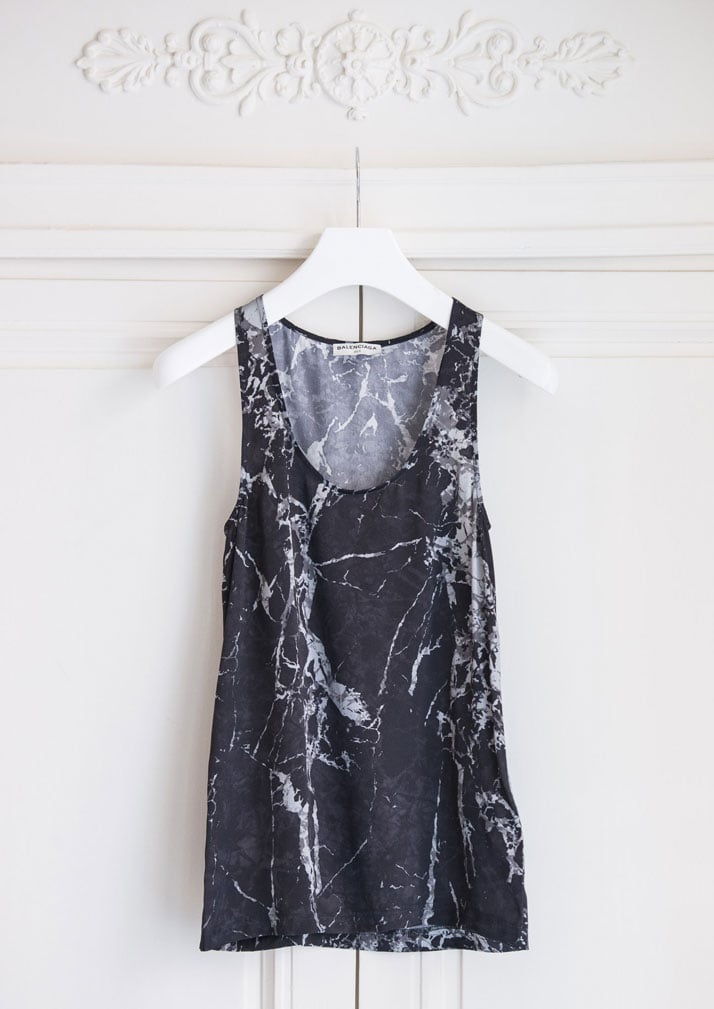
Black marble-print silk top by Balenciaga. Photo © Département Féminin.
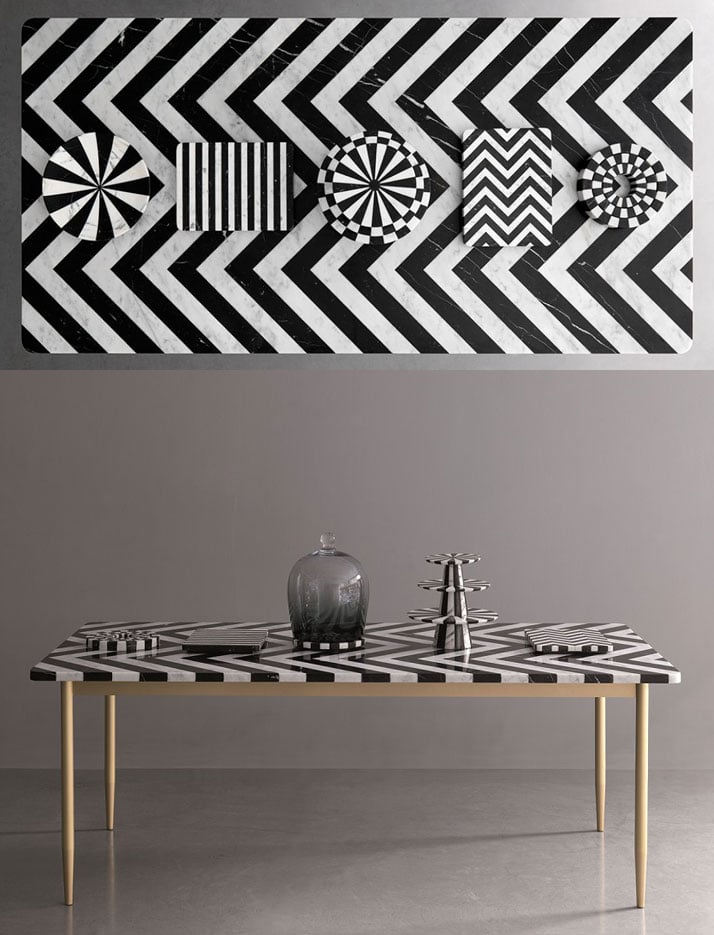
Herringbone Table by Bethan Gray.
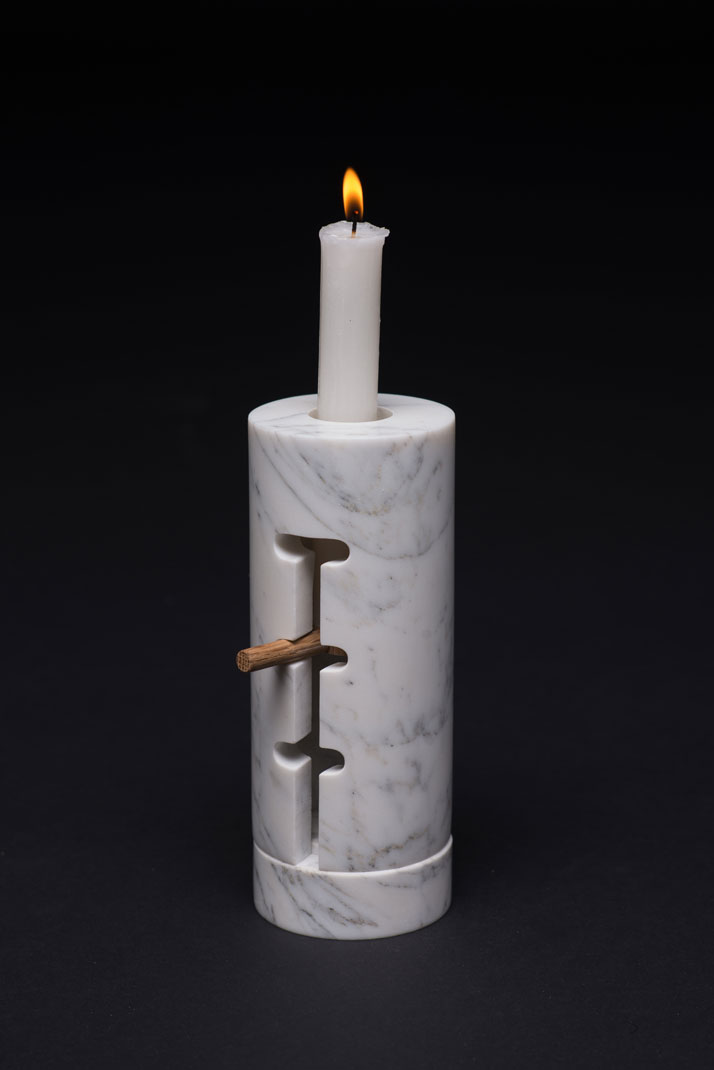
Odnosvechnik (candle holder) by Yaroslav Misonzhnikov. Photo by Mitya Ganopolsky.
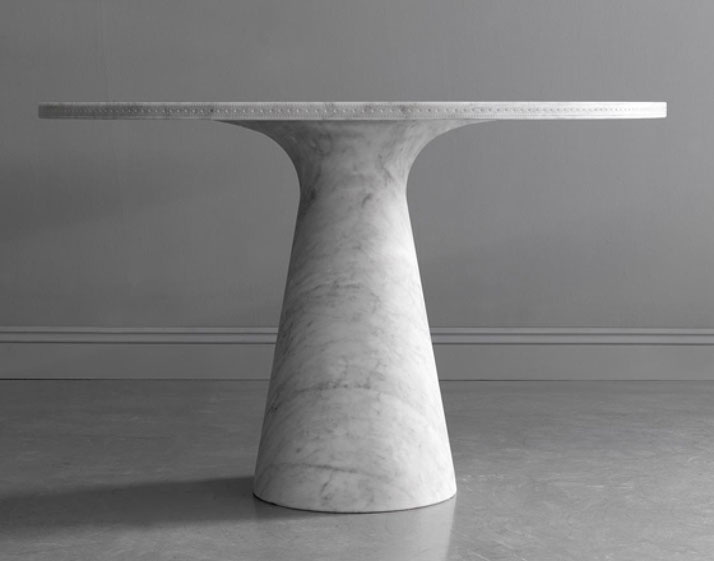
All Marble Brogue by Bethan Gray for Lapicida.
In 2014, there was a continuation of the trend for marble’s use in design, with numerous designers and studios applying this natural material, and variations thereof, to their work. The trend was conspicuous at many design trade shows, including the Stockholm Furniture Fair, Milan design week and London Design Festival. New and advanced technologies have augmented the number of ways in which designers can create and apply shapes using marble, thereby increasing productivity of and accessibility to marble-based products (albeit, some might argue, at the expense of traditional forms of craftsmanship).
In previous years, we have seen many examples of marble’s versatility in furnishings, lighting, storage, accessories, tableware, interiors and fashion. British designer Lee Broom used solid Carrara marble in his contemporary ‘On the Rock’ glassware and Nouveau Rebel lighting collections. Robot City, an Italian factory whose mission is to tell stories through marble, creates elaborate objects using skilled handcraft methods combined with advanced digital technology: its all-marble version of designer Alessandro Mendini’s 1978 Proust chair, priced at €60,000, is a work of art. Faux applications of marble can also be found in wallpaper, bedding, stationery and clothing lines. Marble is the perfect complement to other natural materials such as wood, leather and steel. The marble trestle table ‘In Vain‘ by designer Ben Stormsincorporates leather and steel and also doubles as a standing mirror. ‘All of a Piece’ designed by Dana Cannam in collaboration with Earnest Studio, is a series of modular tabletop pieces that combine marble, granite and wood.
With the (slow) shift in consumer attitudes towards the merits of buying design that is long-lasting, environmentally friendly and sustainable, it is hoped that marble will be one trend that escapes the ravages of our throwaway society.
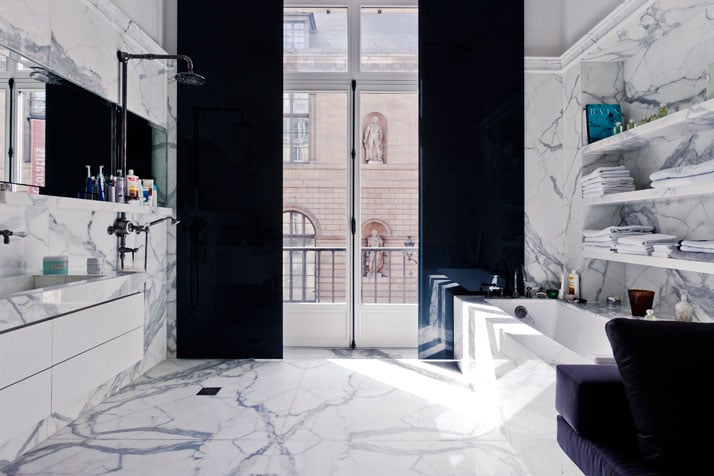
The bathroom of an apartment by Isabelle Stanislas on Rue de Rivoli, Paris, France.
photo © Olivier Löser
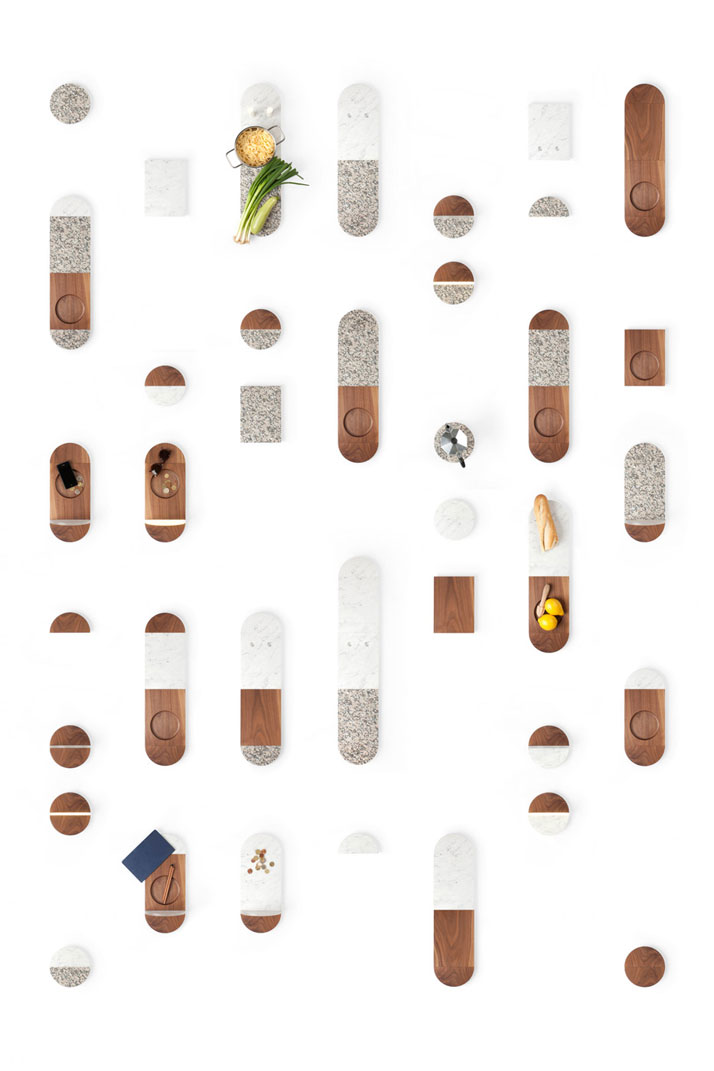
All of a Piece, Modular, Multifunctional Tabletop Accessory by Dana Cannam in collaboration with Earnest Studio.
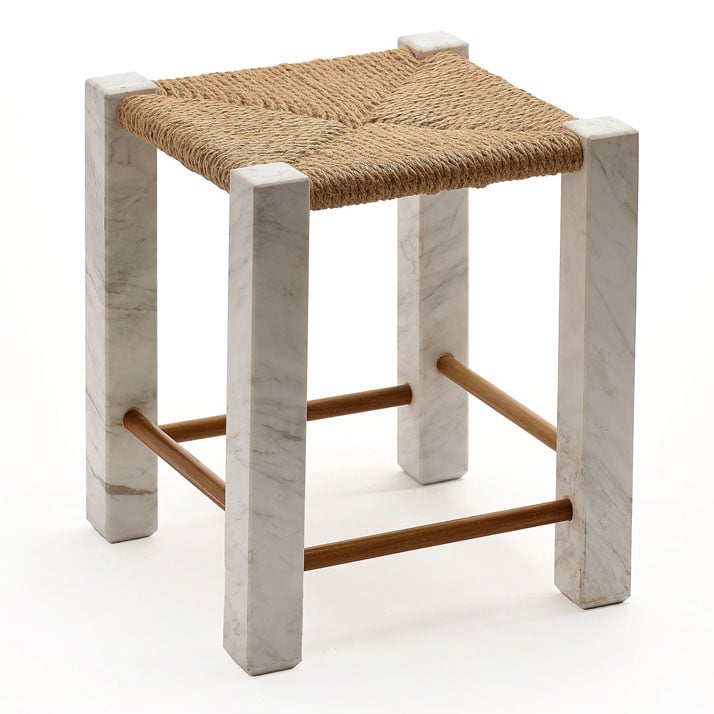
The Volakas Stool by Spacelab for Zeus+Dione.
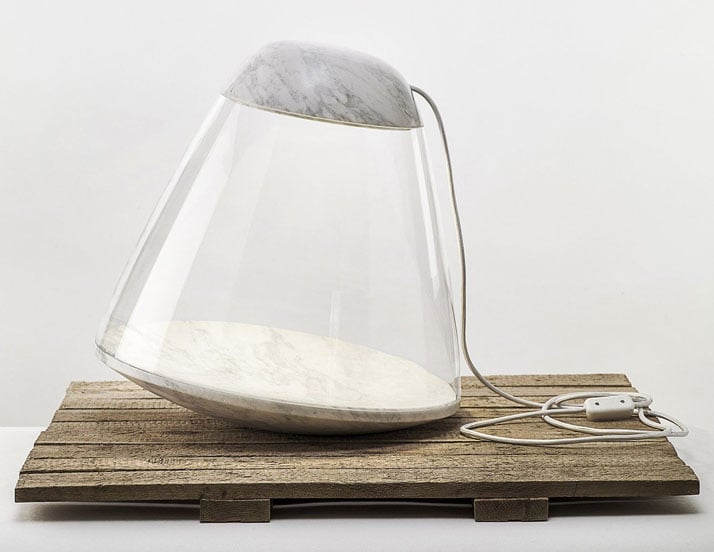
Apollo Light by Dan Yeffet for La Chance.
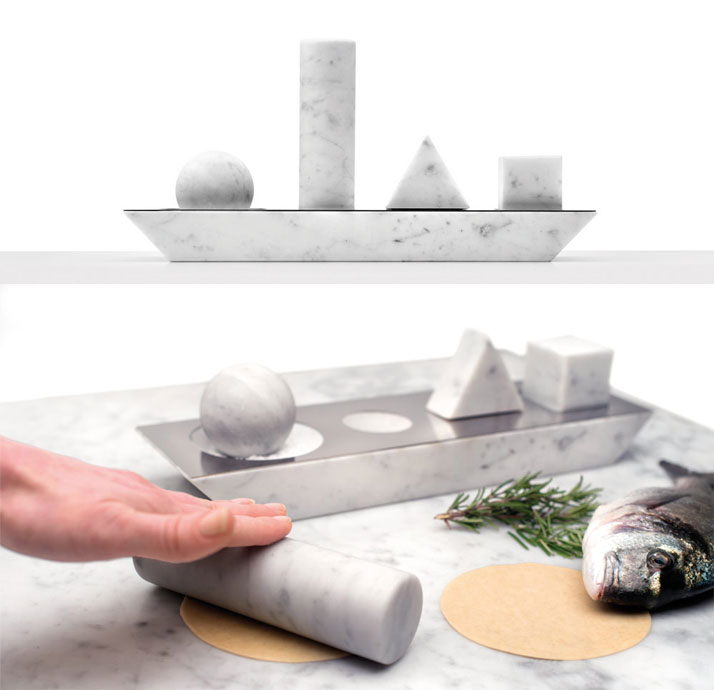
ELEMENTARE by Studio Lievito for Opinion Ciatti.
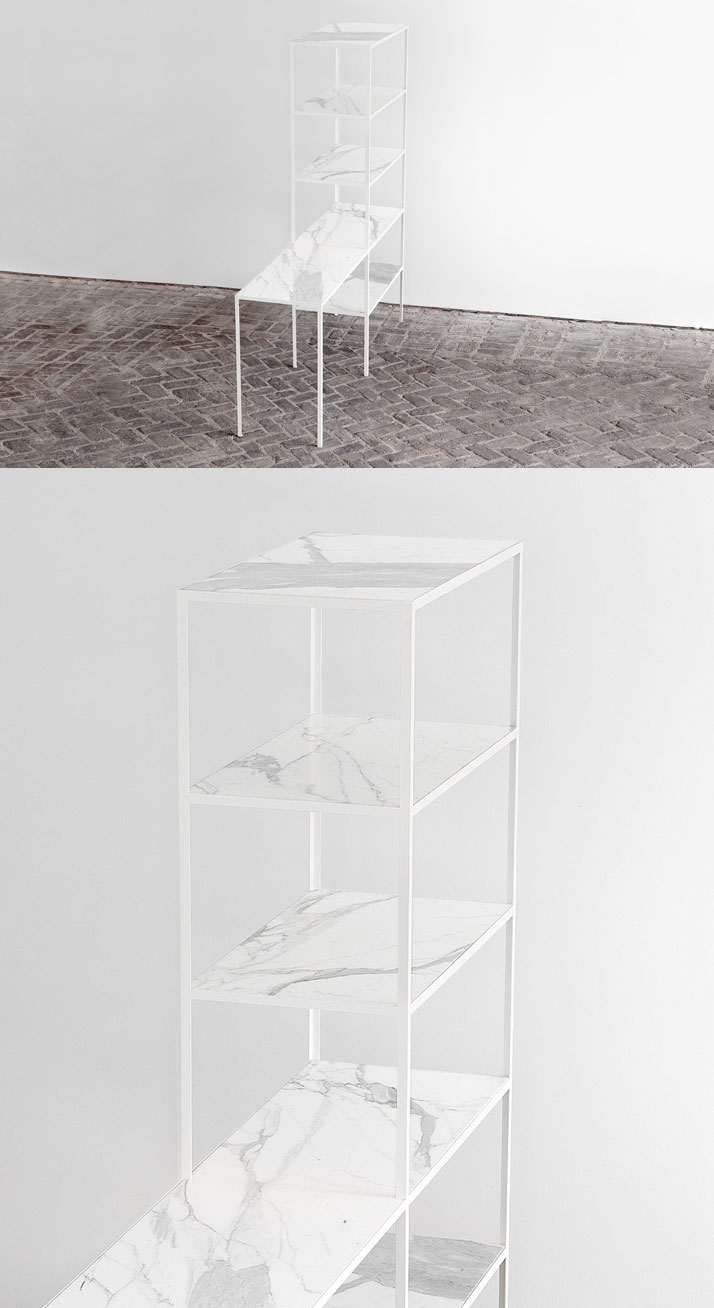
Rack + Table (Marble) by Muller Van Severen.
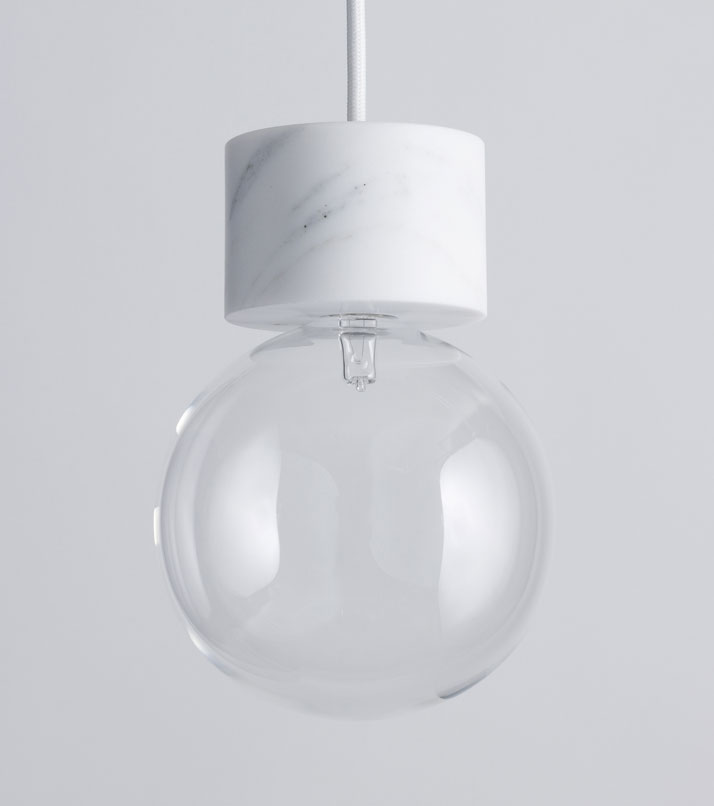
Marble Light by Studio Vit.
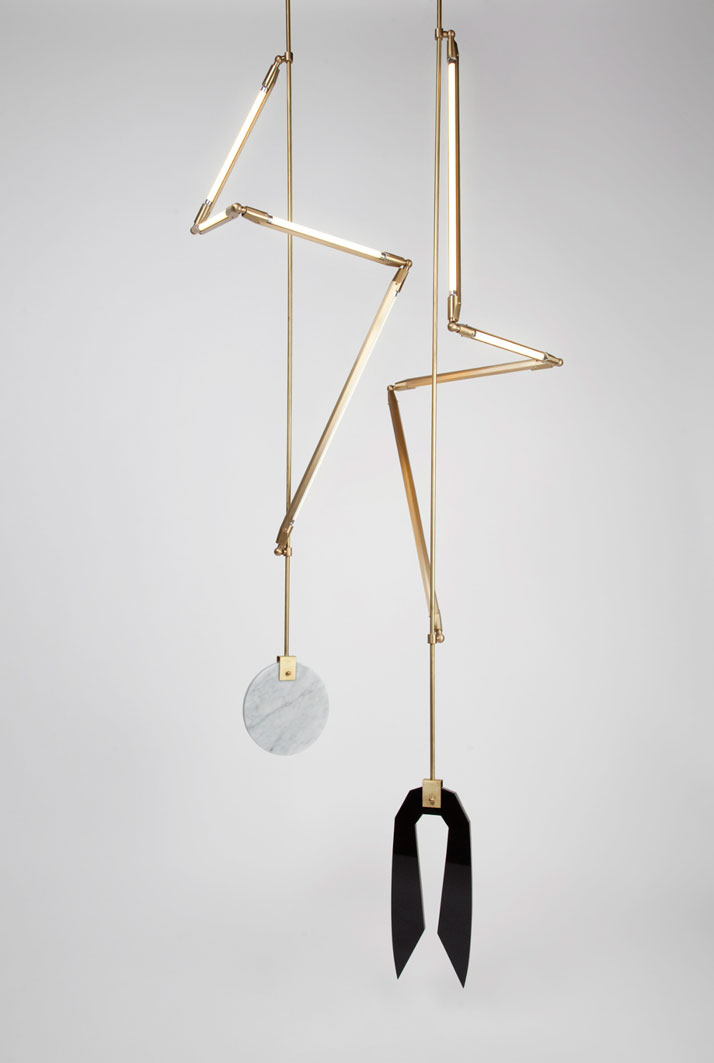
HELIX series by Bec Brittain.
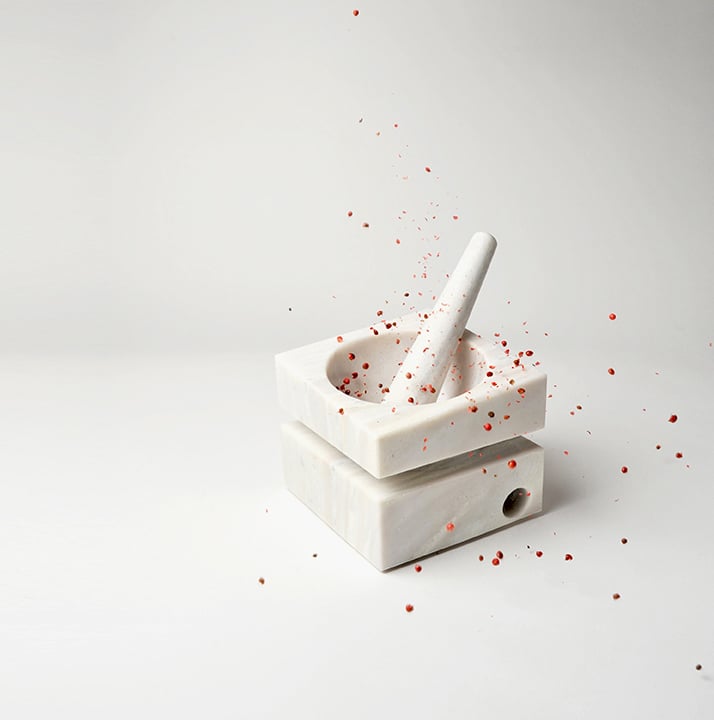
‘Aegis’ mortar and pestle by Spiros Soulis for Iktinos Marmaron.
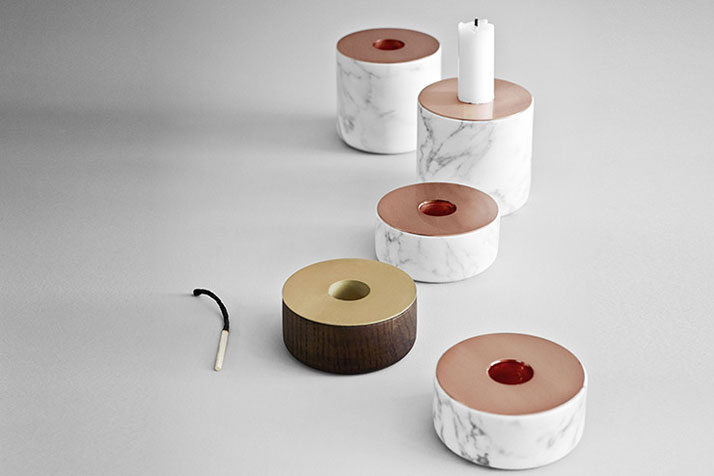
Chunk series of raw and robust candleholders for regular candles by Andreas Engesvik for Menu.
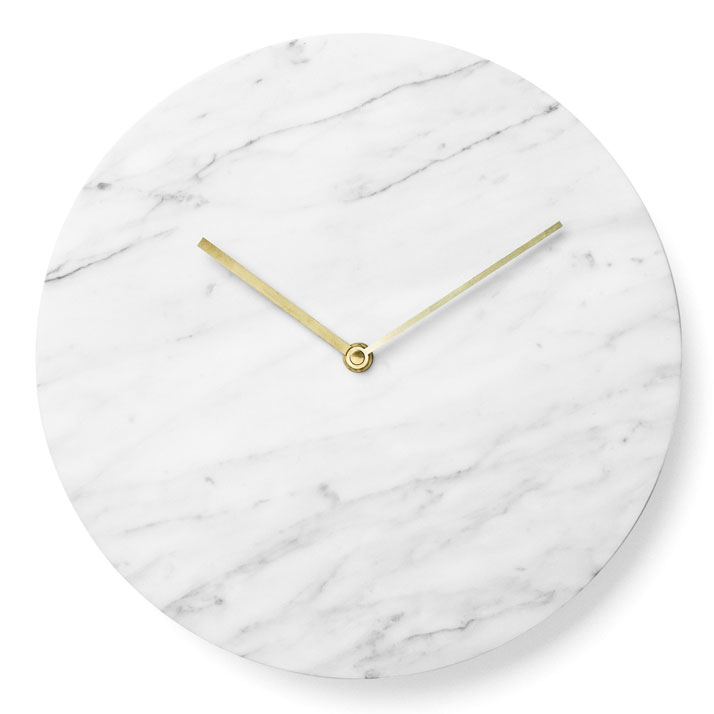
Marble Wall Clock by Norm Architects for Menu.
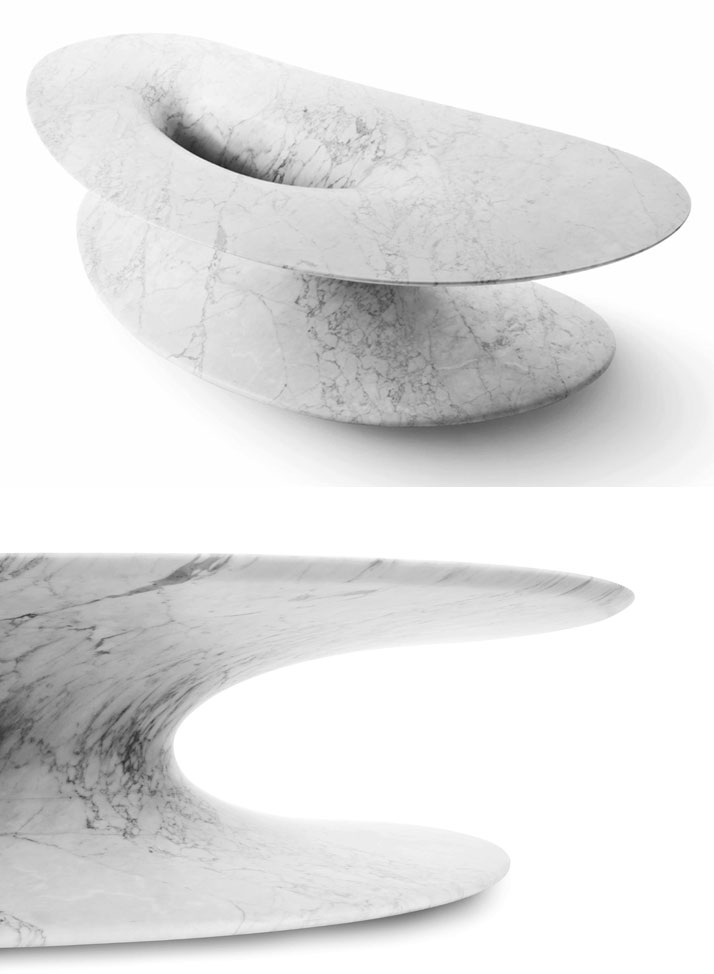
Origin low table in white Carrara marble by Emmanuel Babled.
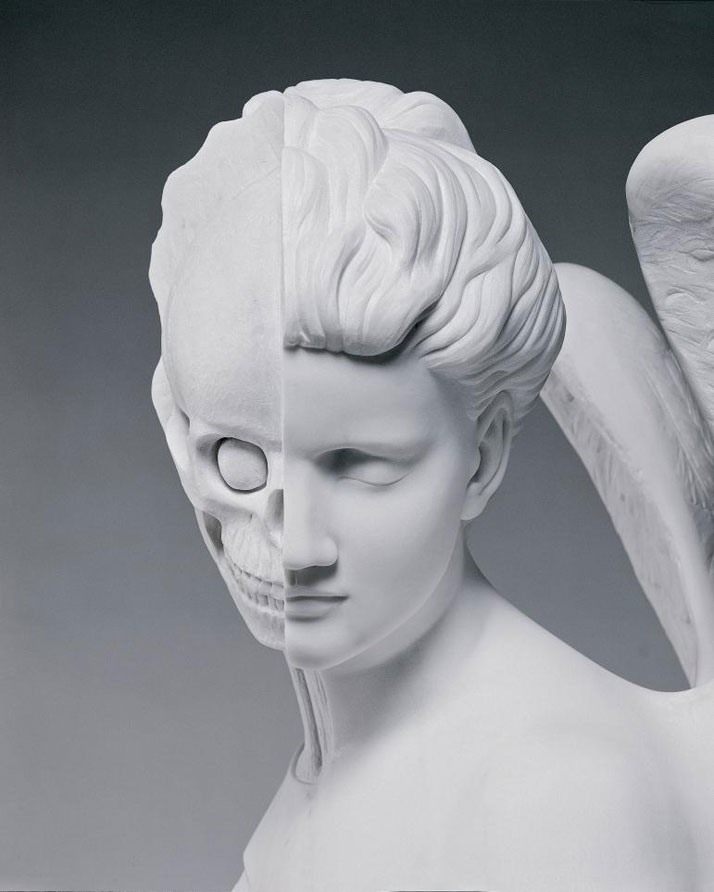
Damien Hirst, The Anatomy of an Angel, 2008 (detail).
Carrara marble, Sculpture
1870 x 980 x 785 mm | 73.6 x 38.6 x 30.9 in | Edition of 3 (indoor version)
Photographed by Prudence Cuming Associates © Damien Hirst and Science Ltd. All rights reserved, DACS 2012.
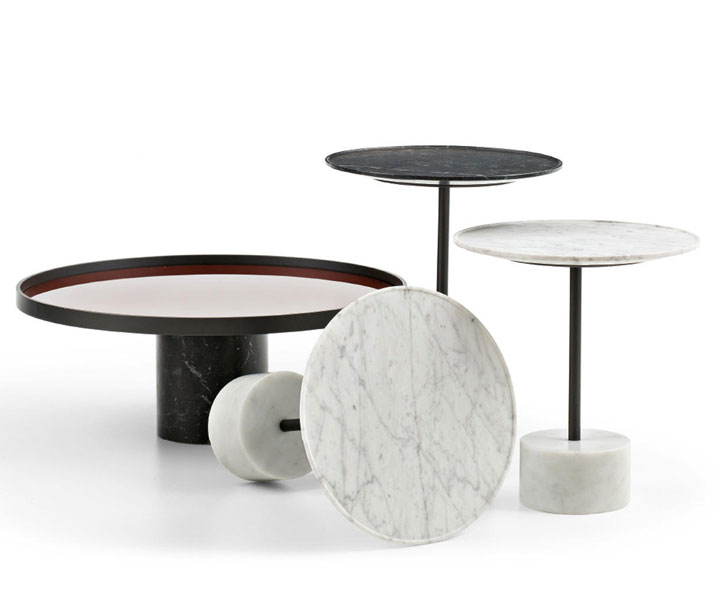
194 9 Table by Piero Lissoni for Cassina.
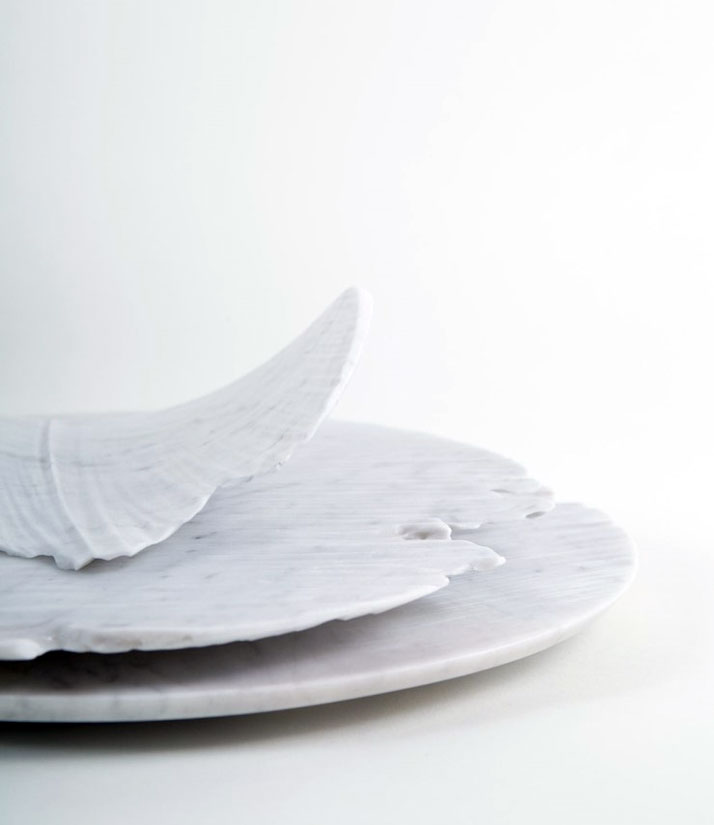
Monolith by Shira Keret.
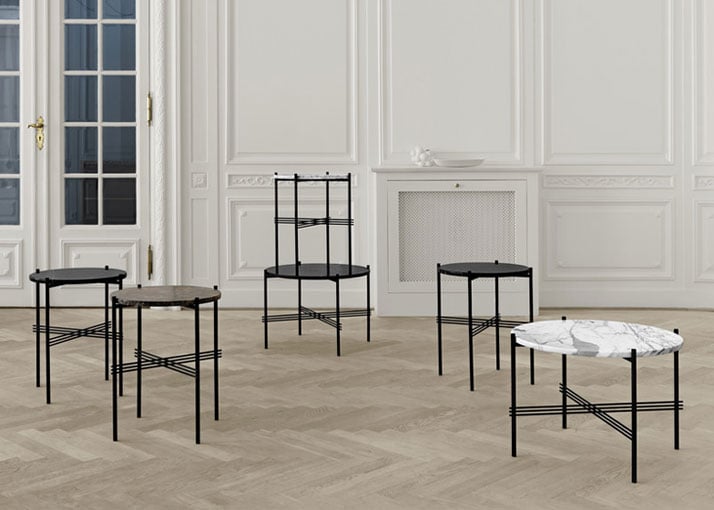
TS Tables by GamFratesi for Gubi.
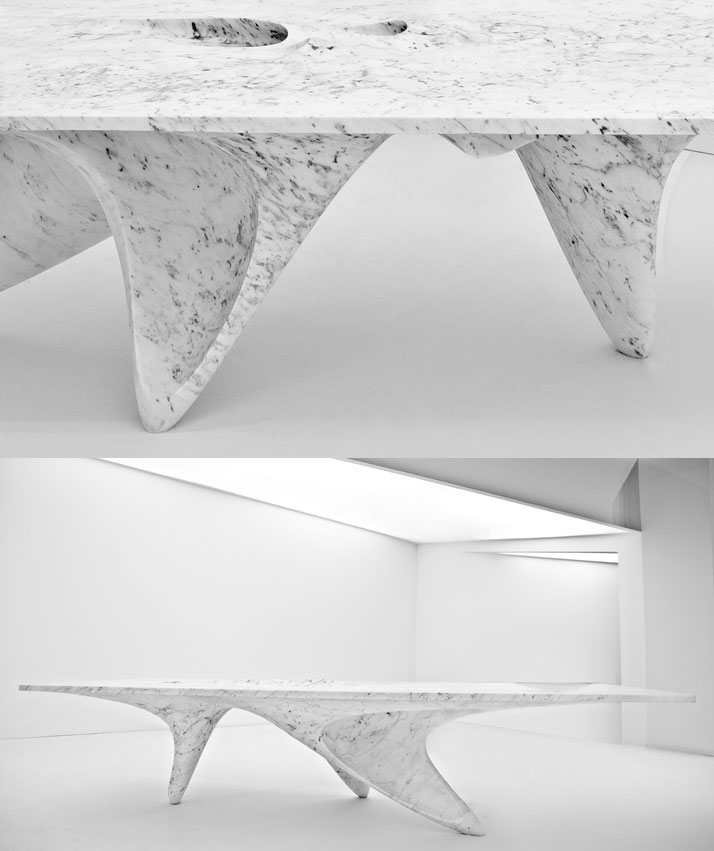
Luna table by Zaha Hadid for Citco. Photo by Jacopo Spilimbergo.
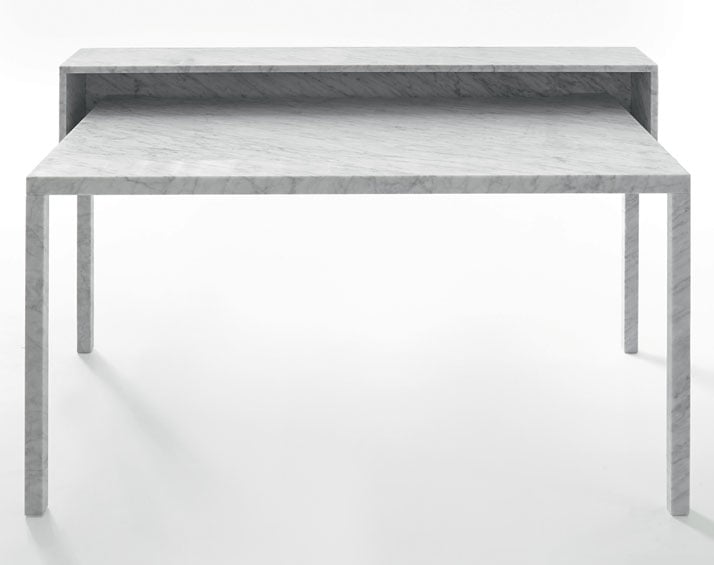
Rendez vous by Philippe Nigro for Marsotto Edizioni.
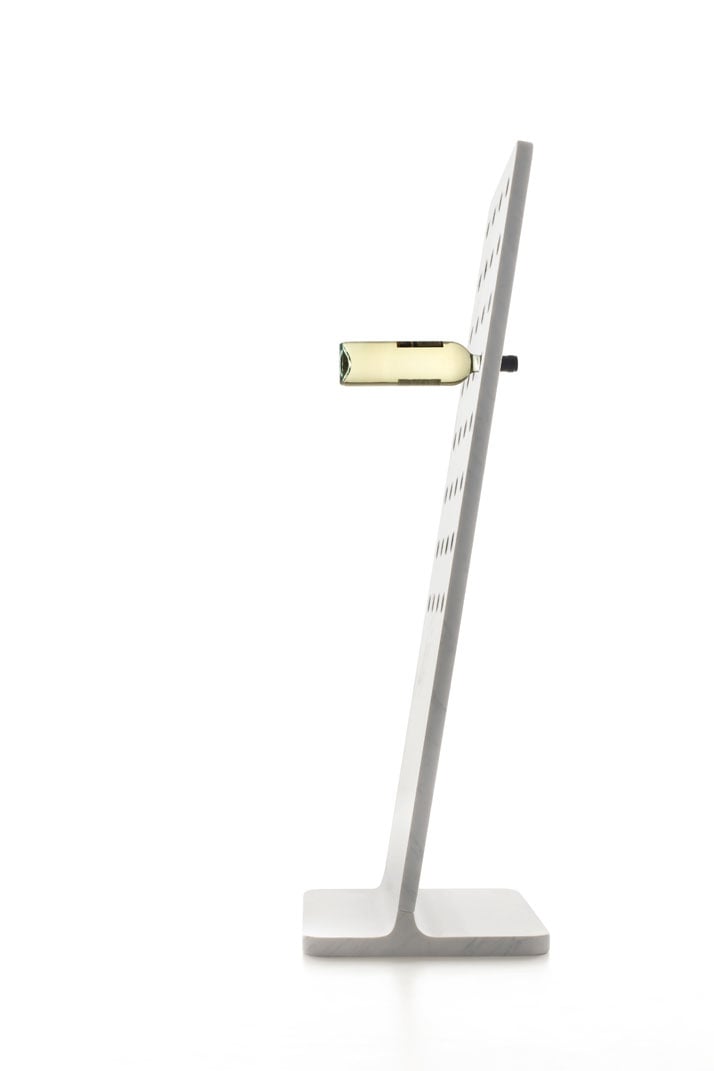
Connoisseur 32 wine rack in White Carrara marble by James Irvine for Marsotto Edizioni, 2011.
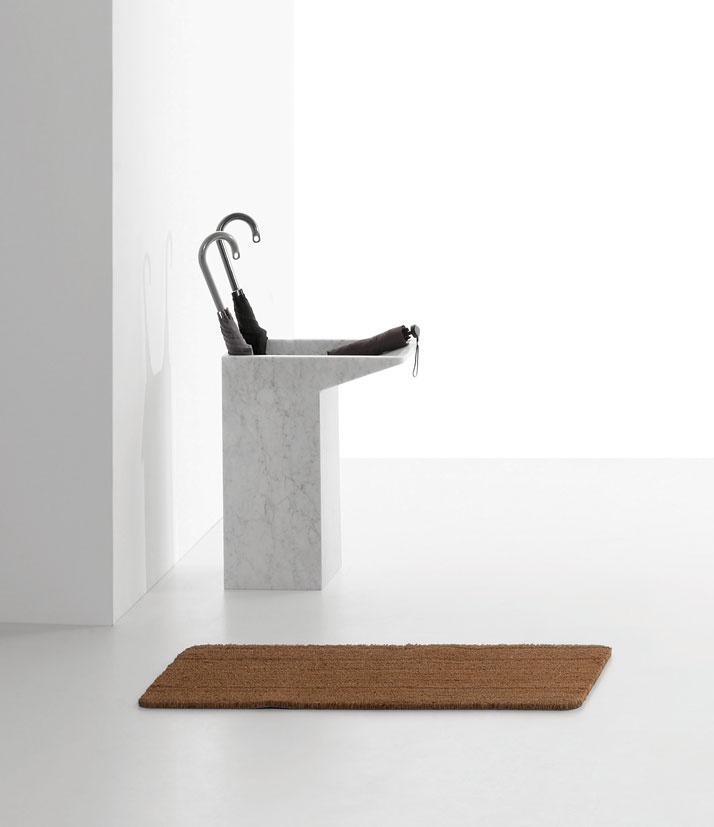
Lello umbrella stand in White Carrara marble by Maddalena Casadei for Marsotto Edizioni, 2011.
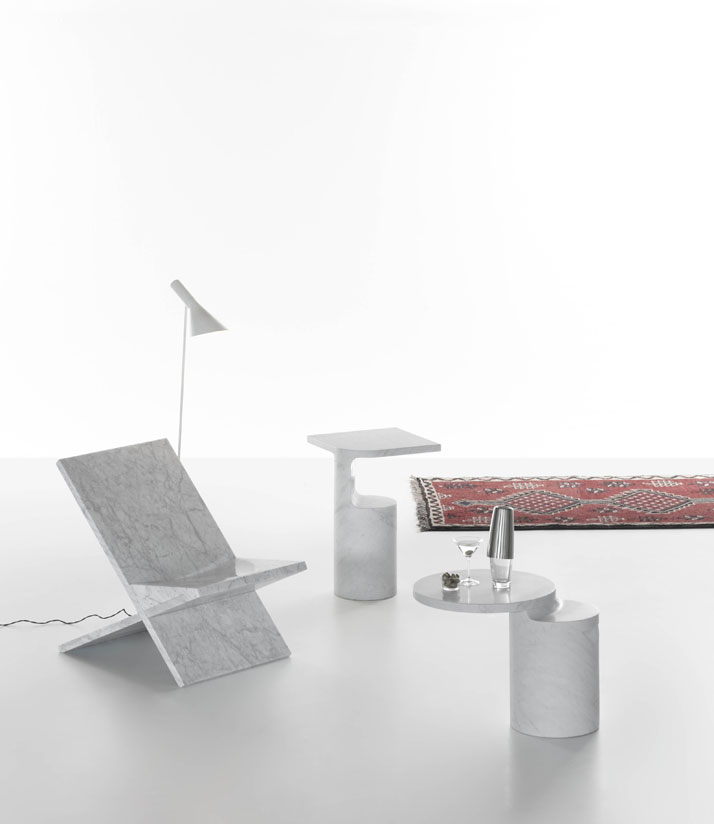
Sultan chair, Galata and Taksim side tables in White Carrara marble by Konstantin Grcic for Marsotto Edizioni, 2010.
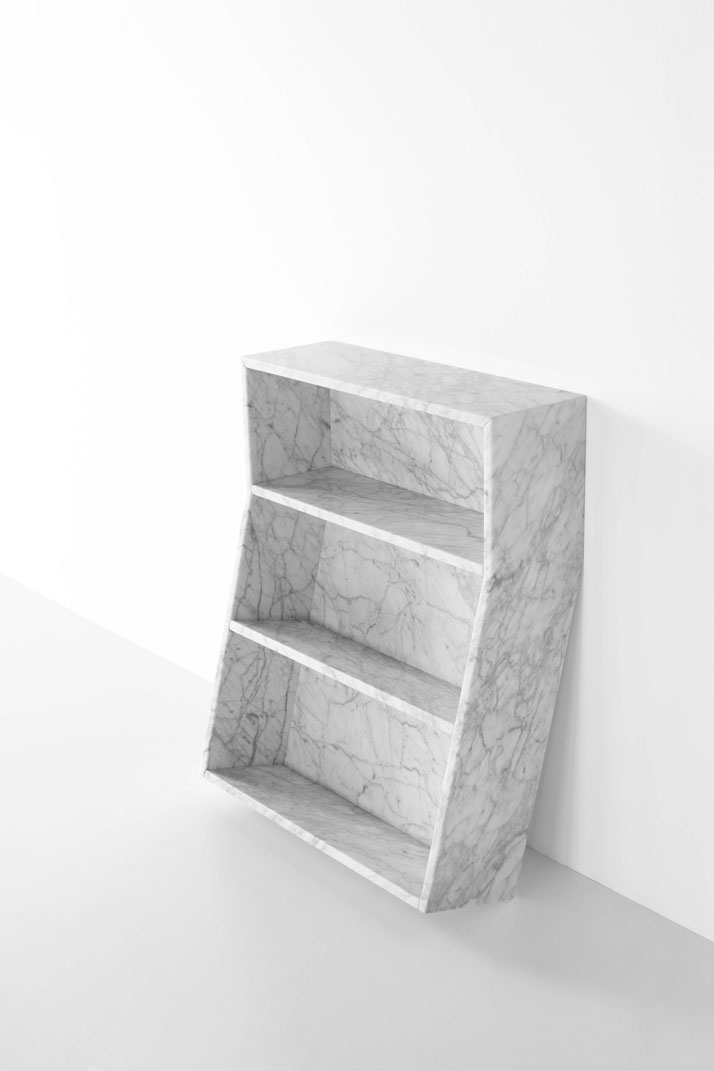
Melt bookcase in White Carrara marble by Thomas Sandell for Marsotto Edizioni, 2010.
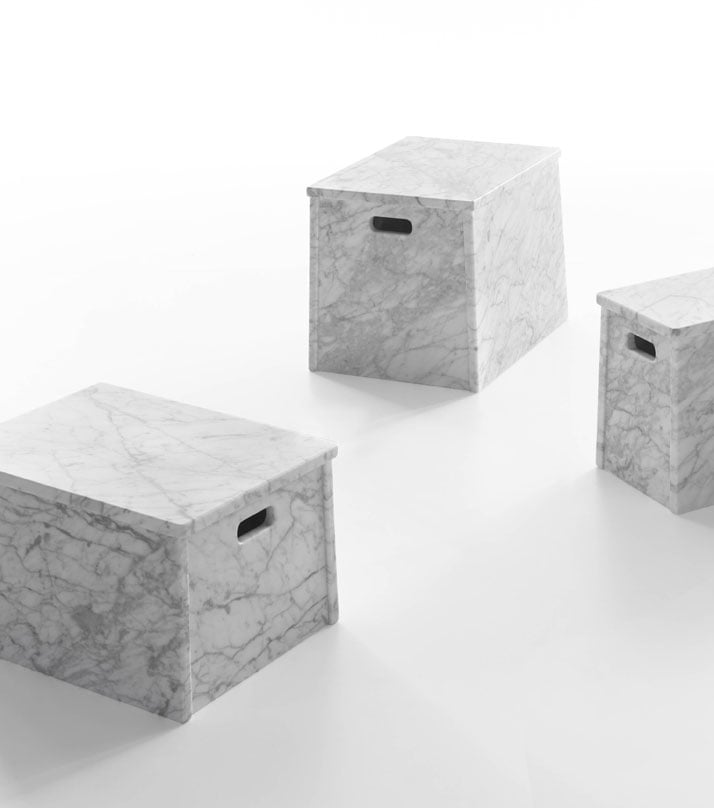
London, Paris, Rome low tables with handles in White Carrara marble by Jasper Morrison for Marsotto Edizioni, 2010.
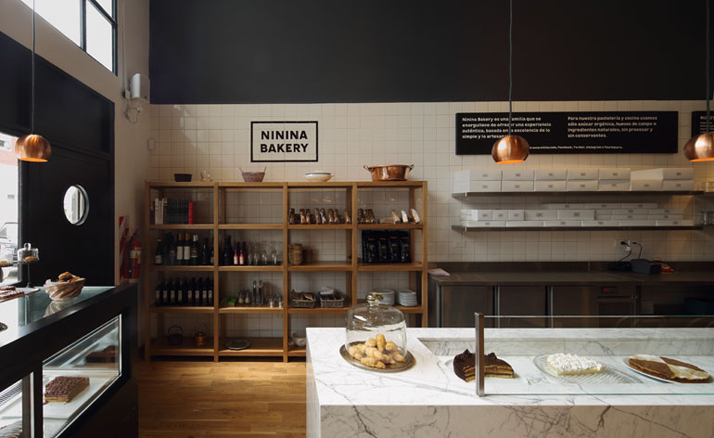
Ninina Bakery in Buenos Aires, Argentina by Estudio Verardo.
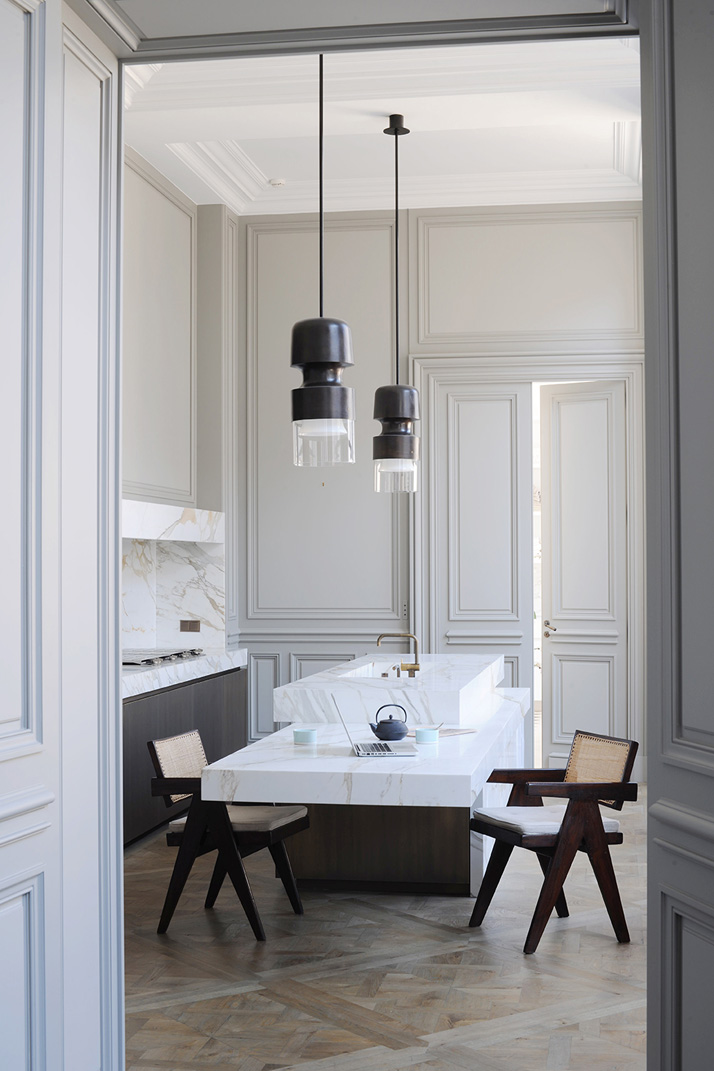
The kitchen of a private apartment by Joseph Dirand in Saint-Germain-des-Prés, Paris, France.
Photo © Adrien Dirand / AD France n° 119, September/October 2013.
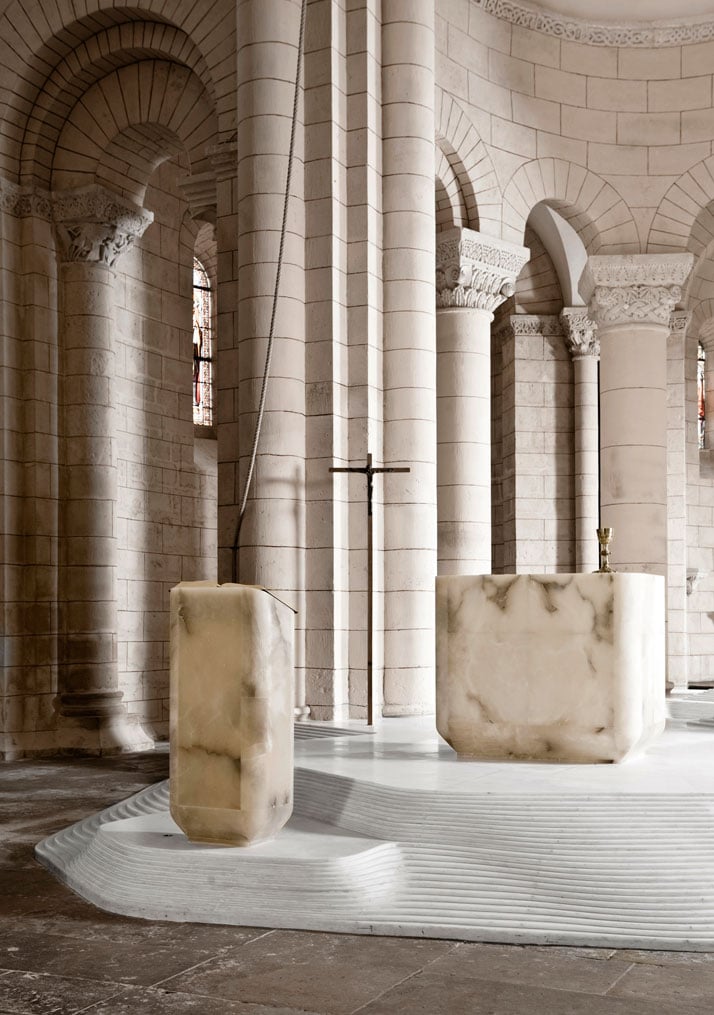
St. Hilaire church by Mathieu Lehanneur in Melle in the Deux-Sèvres district of France.
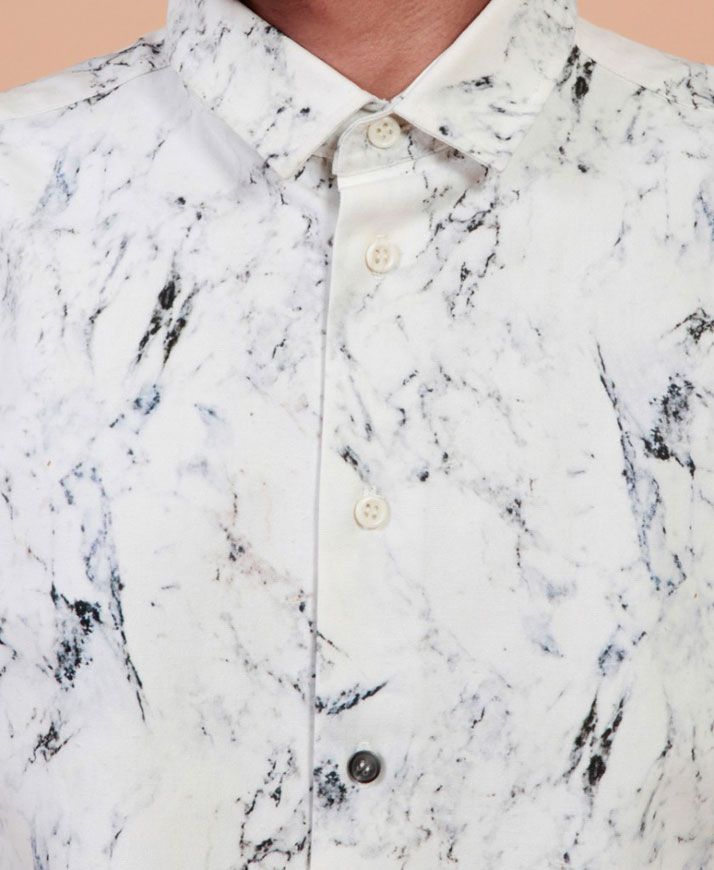
The marble fashion collection by shallowww.
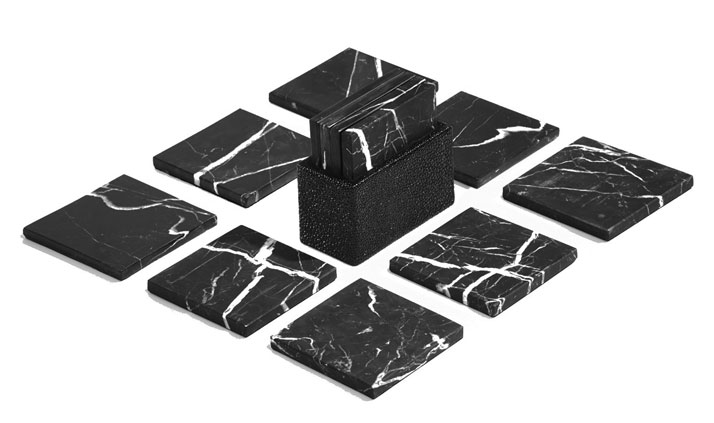
Marble coaster set by Alexander Wang.
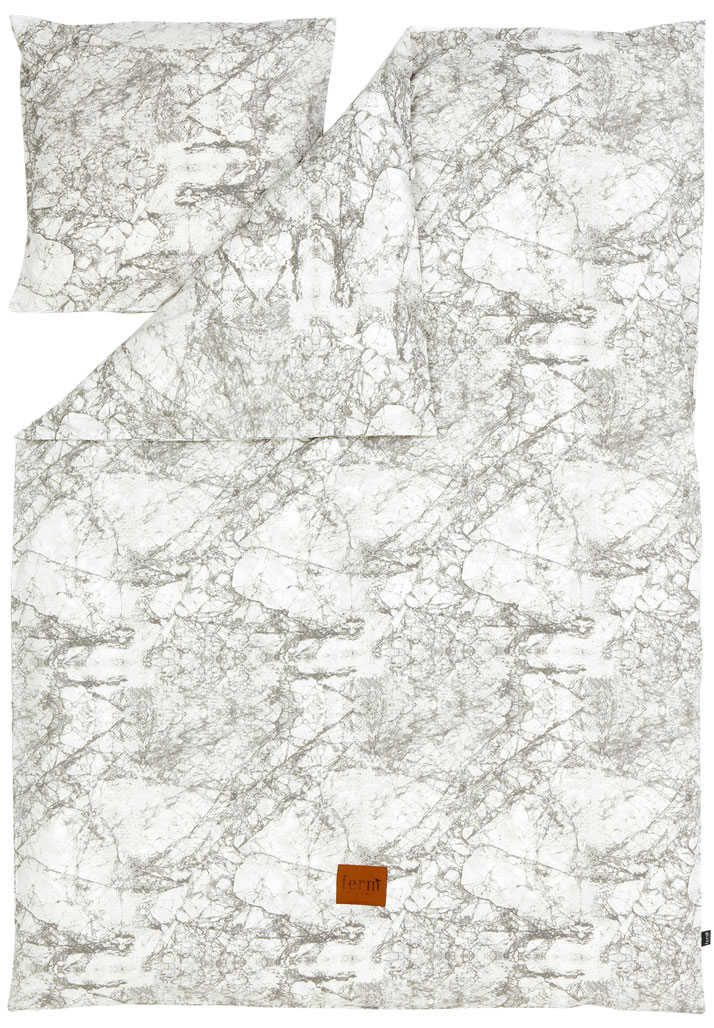
Marble bedding by Ferm Living.
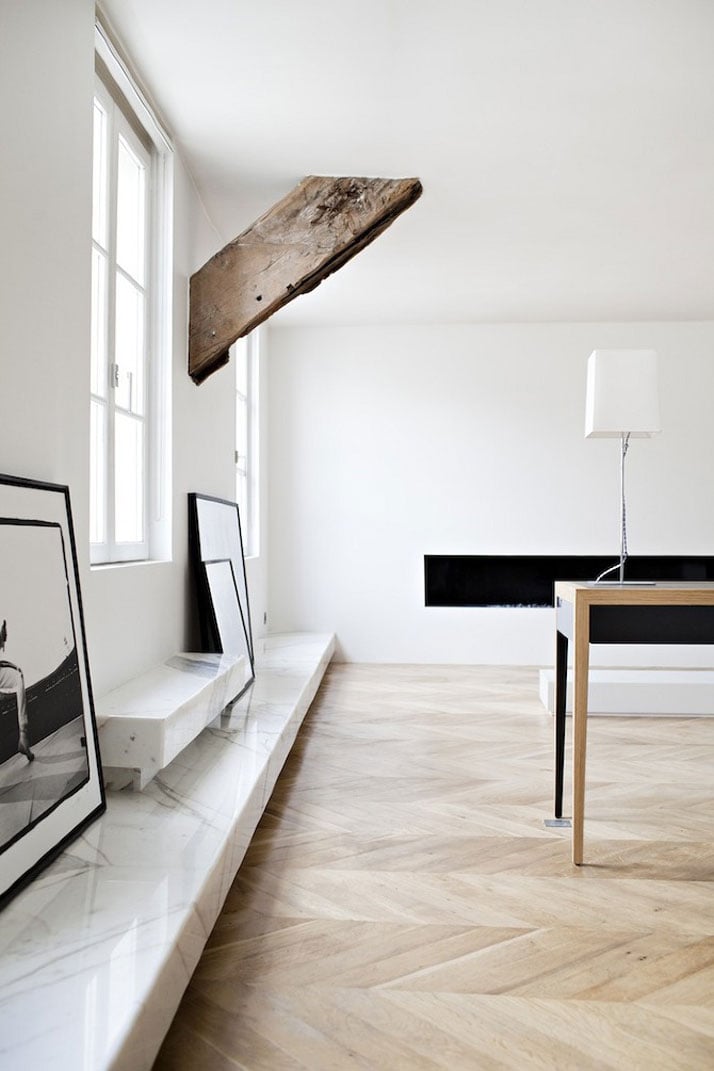
Appartement Poissonniere by Frederic Berthier.
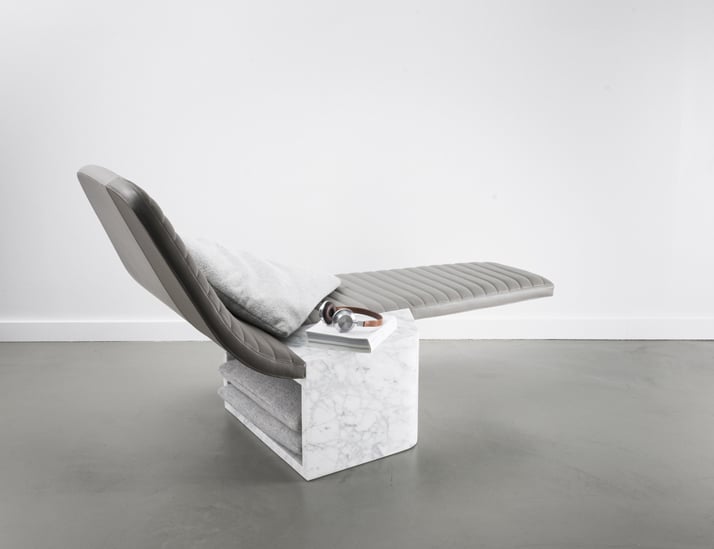
Opper by Grégoire de Lafforest, photo © Jérôme Galland.






